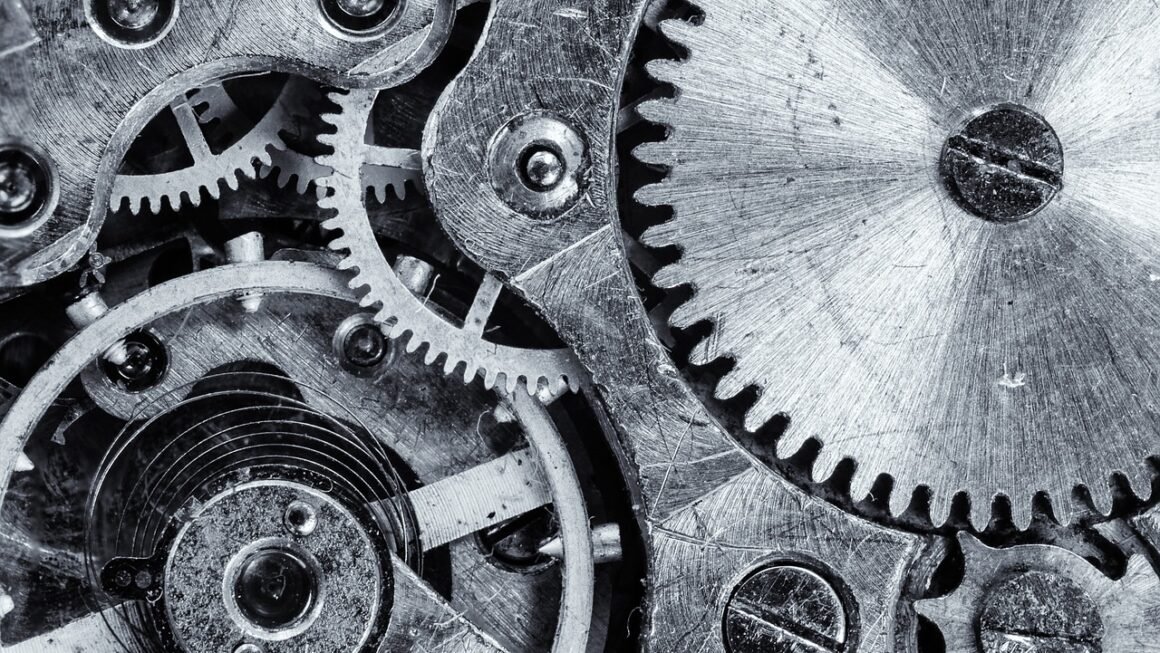Imagine a world where your refrigerator automatically orders groceries when you’re running low, your thermostat adjusts to your preferred temperature before you even arrive home, and your doctor monitors your health remotely, intervening only when necessary. This isn’t science fiction; it’s the reality being shaped by the Internet of Things (IoT). The IoT is revolutionizing how we live, work, and interact with the world around us.
What is the Internet of Things (IoT)?
Defining the Internet of Things
The Internet of Things (IoT) refers to the network of physical objects—”things”—that are embedded with sensors, software, and other technologies for the purpose of connecting and exchanging data with other devices and systems over the internet. These devices range from ordinary household objects to sophisticated industrial tools. The key element is their ability to communicate and act upon data they collect, often without direct human intervention.
Key Components of an IoT System
An IoT system typically consists of several key components working together:
- Devices: The physical objects equipped with sensors, actuators, and communication hardware.
- Connectivity: The means by which devices connect to the internet (e.g., Wi-Fi, Bluetooth, cellular, satellite).
- Data Processing: The analysis and management of data collected by devices, often performed in the cloud.
- User Interface: The application or platform that allows users to interact with the IoT system and control devices.
How IoT Works: A Practical Example
Consider a smart thermostat. It collects data on room temperature, humidity, and user preferences. This data is transmitted to a cloud-based platform where it’s analyzed to determine optimal temperature settings. The thermostat then adjusts the heating or cooling system accordingly. Users can also remotely control the thermostat through a mobile app, further enhancing convenience and energy efficiency.
Benefits of Implementing IoT Solutions
Enhanced Efficiency and Productivity
IoT solutions can significantly improve efficiency across various industries. Here are some examples:
- Manufacturing: Predictive maintenance using sensor data to prevent equipment failures, reducing downtime and costs.
- Agriculture: Precision farming techniques employing sensors to monitor soil conditions, optimize irrigation, and maximize crop yields.
- Logistics: Real-time tracking of shipments using GPS and sensor data to improve supply chain visibility and delivery efficiency.
Improved Decision-Making
The vast amounts of data generated by IoT devices provide valuable insights that can inform better decision-making:
- Healthcare: Remote patient monitoring using wearable devices to track vital signs and detect early warning signs of health problems.
- Retail: Customer behavior analysis using in-store sensors to optimize product placement and improve the shopping experience.
- Smart Cities: Data-driven urban planning using sensors to monitor traffic patterns, air quality, and energy consumption.
Cost Reduction
By optimizing processes and preventing waste, IoT solutions can lead to substantial cost savings:
- Energy Management: Smart grids using sensors and data analytics to optimize energy distribution and reduce energy consumption.
- Resource Optimization: Efficient water management using sensors to detect leaks and optimize irrigation.
- Automation: Automating repetitive tasks to reduce labor costs and improve accuracy.
Key IoT Technologies and Protocols
Wireless Communication Protocols
Several wireless communication protocols are essential for enabling IoT connectivity:
- Wi-Fi: Suitable for high-bandwidth applications within a limited range.
- Bluetooth: Ideal for short-range communication between devices.
- Cellular (4G/5G): Provides wide-area connectivity for mobile IoT devices.
- LoRaWAN: Long-range, low-power communication for IoT devices in remote locations.
- Zigbee: Low-power, low-data rate communication for mesh networks.
Cloud Computing Platforms
Cloud computing platforms play a crucial role in storing, processing, and analyzing IoT data:
- Amazon Web Services (AWS) IoT: Offers a comprehensive suite of IoT services for device management, data analytics, and security.
- Microsoft Azure IoT Hub: Provides a scalable and secure platform for connecting, monitoring, and managing IoT devices.
- Google Cloud IoT Platform: Enables businesses to connect, manage, and analyze IoT data with ease.
Edge Computing
Edge computing involves processing data closer to the source (i.e., at the edge of the network) to reduce latency and improve response times. This is particularly important for applications that require real-time decision-making, such as autonomous vehicles and industrial automation.
IoT Security and Privacy Considerations
Security Challenges
IoT devices are often vulnerable to security threats due to their limited processing power, lack of security updates, and widespread deployment. Common security challenges include:
- Device Hacking: Attackers can gain control of IoT devices and use them to launch attacks or steal data.
- Data Breaches: Sensitive data collected by IoT devices can be intercepted or stolen.
- Denial-of-Service (DoS) Attacks: Attackers can flood IoT networks with traffic, making them unavailable to legitimate users.
Security Best Practices
To mitigate these security risks, it’s important to follow these best practices:
- Secure Device Configuration: Change default passwords and disable unnecessary services on IoT devices.
- Data Encryption: Encrypt data both in transit and at rest to protect it from unauthorized access.
- Regular Security Updates: Keep IoT devices up to date with the latest security patches.
- Network Segmentation: Isolate IoT devices on a separate network to prevent attackers from accessing other parts of the network.
- Intrusion Detection: Implement intrusion detection systems to monitor IoT networks for suspicious activity.
Addressing Privacy Concerns
IoT devices collect vast amounts of personal data, raising privacy concerns. It’s essential to be transparent about data collection practices and give users control over their data. Following these guidelines can help protect user privacy:
- Data Minimization: Collect only the data that is necessary for the intended purpose.
- Data Anonymization: Remove personally identifiable information from data before analyzing it.
- User Consent: Obtain explicit consent from users before collecting and using their data.
- Data Retention Policies: Establish clear policies for how long data will be retained and how it will be disposed of.
The Future of IoT
Emerging Trends
The future of IoT is bright, with several emerging trends shaping its evolution:
- AI-powered IoT: Integrating artificial intelligence (AI) and machine learning (ML) to enhance IoT data analysis and decision-making.
- 5G Connectivity: Leveraging 5G networks to enable faster and more reliable IoT connectivity.
- Digital Twins: Creating virtual replicas of physical assets to optimize performance and predict failures.
- Edge AI: Deploying AI models on edge devices to enable real-time data processing and decision-making.
- Sustainability: Using IoT to promote sustainability by optimizing energy consumption, reducing waste, and monitoring environmental conditions.
Use Cases Across Industries
IoT is transforming various industries, including:
- Healthcare: Remote patient monitoring, telehealth, and smart hospitals.
- Manufacturing: Predictive maintenance, smart factories, and supply chain optimization.
- Retail: Personalized shopping experiences, inventory management, and supply chain visibility.
- Transportation: Autonomous vehicles, smart traffic management, and logistics optimization.
- Smart Cities: Smart lighting, smart parking, and environmental monitoring.
Conclusion
The Internet of Things is rapidly transforming the world, offering unprecedented opportunities for efficiency, innovation, and improved quality of life. While security and privacy concerns must be addressed proactively, the potential benefits of IoT are undeniable. By understanding the fundamentals of IoT, its key technologies, and best practices, individuals and organizations can harness its power to create a more connected, efficient, and sustainable future. Embracing IoT is no longer a question of “if,” but “how” to best integrate it into our lives and businesses to unlock its full potential.



